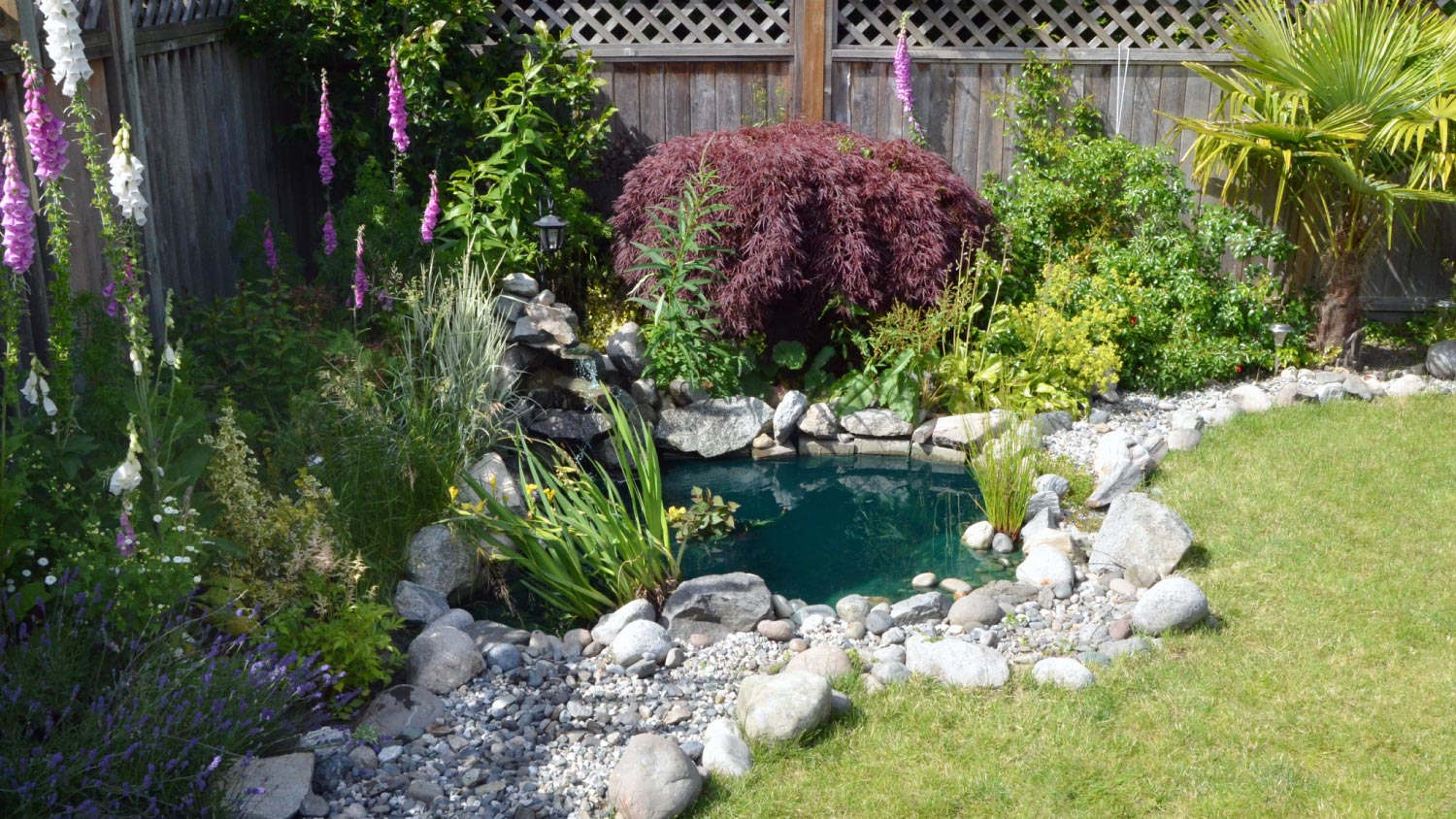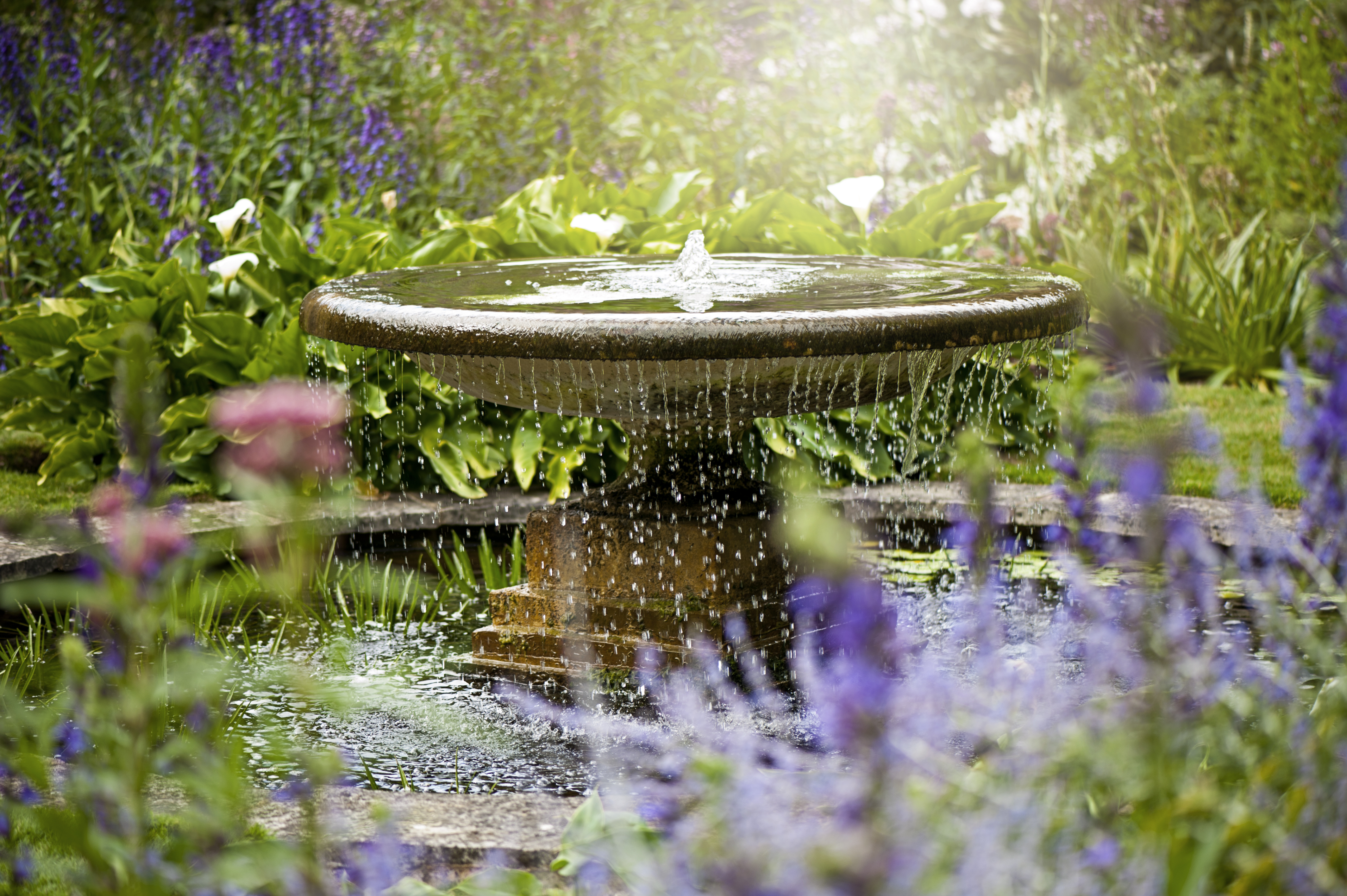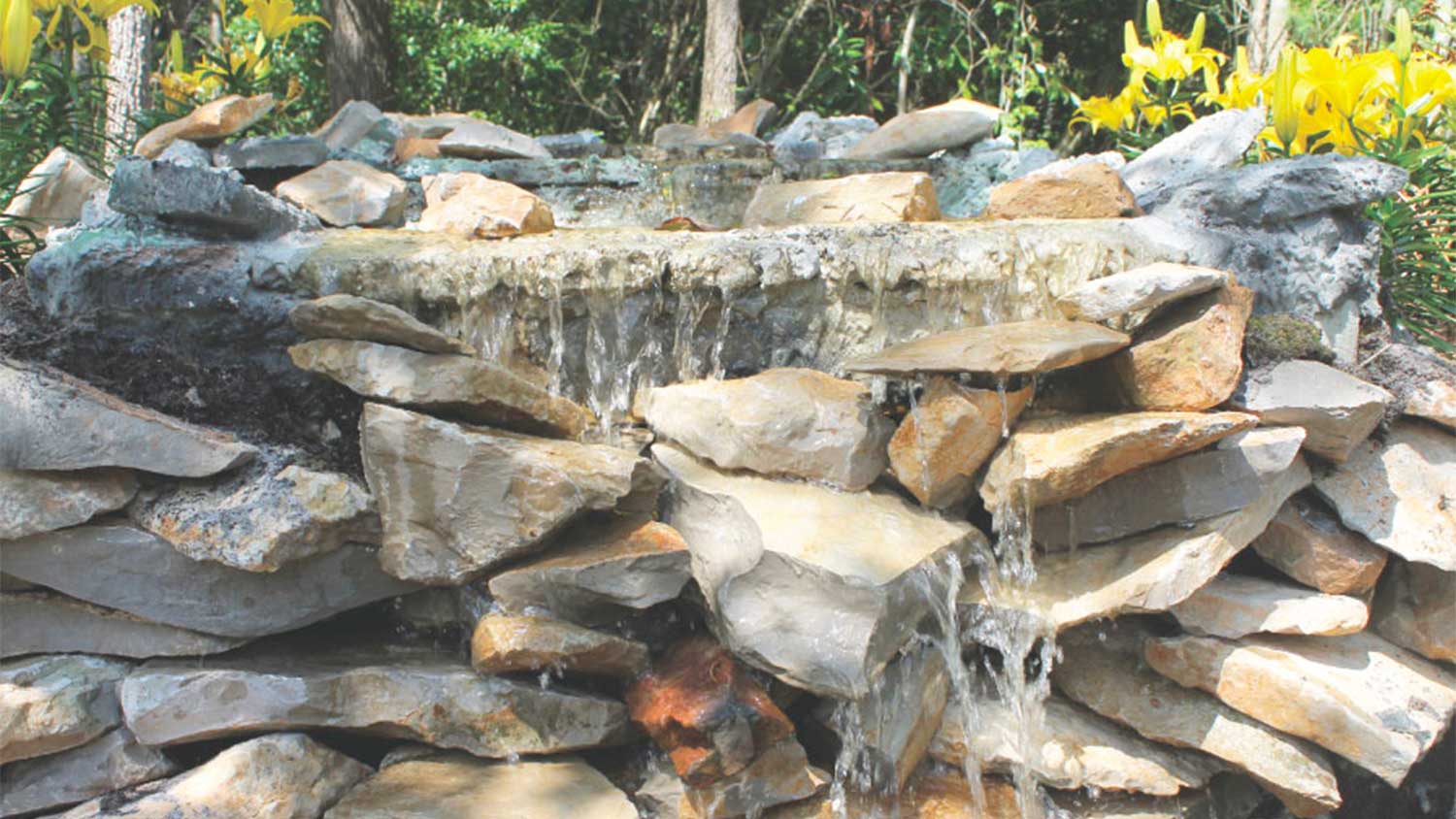
Discover how much it costs to build a pond. Learn about average prices, cost factors, and tips to plan your backyard pond project with confidence.
Installing a pond liner costs an average of $1,000, with most homeowners paying between $640 and $3,980 on average. Your total depends on pond size, liner material, and installation complexity.


Size, material, and labor are the main cost drivers for determining how much a pond liner costs.
Professional installation costs $40 to $150 per hour and ensures durability and leak prevention.
Material choice ranges from $0.40 to $120 per square foot and impacts lifespan and maintenance.
Site prep, permits, and added features can raise total costs.
A well-installed pond liner boosts property value and outdoor enjoyment.
This article was created using automation technology and thoroughly fact-checked and edited by an Angi Editor in accordance with our AI policy.
How much does a pond liner cost? On average, homeowners spend $1,000 to install a pond liner, with most projects averaging from $640 to $3,980. The cost per square foot falls between $0.50 and $3.50, depending on the liner material and pond size. Understanding these costs helps you budget for a beautiful, long-lasting pond.
Let’s take a closer look at what impacts your total cost and how you can make smart choices for your pond project.
When you’re planning a pond, the size is the first thing to consider. Pond liner costs are directly tied to the surface area you need to cover. Larger ponds require more material and can drive up both material and labor costs. Accurate measurements of length, width, and depth are crucial to avoid buying too much or too little liner. Standard liner sizes are often more affordable, while custom shapes or oversized liners can add to your budget.
Pond size determines how much liner you’ll need. A small garden pond can use a pre-cut liner, while larger or irregular shapes often require a custom piece. Overestimating leads to wasted material and spending, while underestimating might delay your project. Always measure carefully and account for extra material to cover edges and slopes.
Pond liners are often sold by the square foot, with prices ranging from $0.50 to $3.50 per square foot. Thicker and more durable liners, such as reinforced polyethylene, cost more per foot but offer better longevity. Material choice, thickness, and pond depth all influence the final square foot price.
| Pond Size (Sq. Ft.) | Average Cost | Cost Range |
|---|---|---|
| 50 | $100 | $25–$170 |
| 100 | $200 | $50–$350 |
| 250 | $500 | $125–$875 |
| 500 | $1,000 | $250–$1,750 |
| 1,000 | $2,000 | $500–$3,500 |
Pond liner material is a major cost driver. Each type has its own benefits, drawbacks, and price points. Choosing the right liner for your pond’s shape, size, and intended use is key to a successful, cost-effective installation.
The main pond liner types include EPDM rubber, PVC, HDPE, RPE, vinyl, concrete, and fiberglass. EPDM rubber is flexible and easy to install, while PVC offers a low upfront cost but a shorter lifespan. HDPE and RPE are more durable and suitable for large or commercial ponds.
Concrete and fiberglass are often reserved for permanent, decorative, or high-traffic ponds and come with higher installation costs. Each material’s durability, repairability, and ease of installation can influence both upfront and long-term expenses.
| Liner Type | Cost per Sq. Ft. | Pros | Cons | Lifespan (Years) |
|---|---|---|---|---|
| EPDM rubber | $0.70–$2.30 | Flexible, durable, easy to patch | Heavier, higher upfront cost | 20–30 |
| PVC | $0.50–$1.50 | Affordable, lightweight | Less durable, UV sensitive | 7–15 |
| HDPE | $0.40–$1.30 | Strong, UV resistant | Less flexible, harder to patch | 20–25 |
| RPE | $0.90–$2 | Lightweight, puncture resistant | Limited availability | 20–40 |
| Vinyl | $0.50–$2.00 | Custom shapes, decorative | Costly, not as durable | 10–20 |
| Concrete | $60–$120 | Permanent, highly durable | Expensive, cracks possible | 30+ |
| Fiberglass | $3.00–$6.50 | Rigid, long-lasting | Very costly, limited flexibility | 30+ |
Several factors, beyond size and material, affect the total price of installing a pond liner. Understanding these variables helps you budget and plan for a smooth project.
Pond liners are installed by landscapers, pond specialists, or general contractors. Labor rates can range from $40 to $150 per hour, and most projects require several hours to a few days, depending on the pond size and complexity.
Some contractors set a minimum service fee that can significantly affect smaller projects. Labor costs also fluctuate based on region and factors like site accessibility, the complexity of your pond design, and the type of liner being installed.
Some municipalities require permits for ponds over a certain size or depth. Permit fees can range from $50 to $500. Always check your local building department’s requirements before starting, as unpermitted work might be subject to fines or removal.
Where you live has a real impact on how much a pond liner costs. Both materials and labor can vary widely across the country, and local conditions might require specific liner types or installation methods.
Urban areas tend to have higher labor rates and material costs due to increased demand and overhead. Rural regions might see lower prices, but limited availability can sometimes drive up costs for specialty liners.
Climate is another important factor—areas with extreme temperatures, freeze/thaw cycles, or high UV exposure may require more durable (and expensive) liners to prevent premature failure.
Adding features such as waterfalls, fountains, or lighting increases the overall cost. Installing a filtration system, pump, or skimmer can add $100 to $1,000 or more, depending on quality and complexity. Upgrading to reinforced or decorative liners also adds to your budget, but can enhance both durability and appearance.
Keep these other costs in mind as you plan your pond liner installation project:
Complex pond shapes, multiple levels, or custom designs require more labor and material.
Difficult site access can increase delivery and labor charges.
Site prep, such as excavation, grading, and debris removal, adds to the total.
Delivery fees for heavy or oversized liners may apply.
Post-construction cleanup and disposal of old liners or debris can increase costs.
Design or consultation fees for custom ponds may be charged by some contractors.
Inspections, if required, add an additional fee to your project.
Beyond installation, there are ongoing and one-time expenses that affect how much a pond liner costs over time.
Many liner manufacturers and installers offer warranties, which can range from five to 30 years. Longer warranties often come with higher upfront costs, but they can provide peace of mind and reduce long-term repair or replacement expenses. Always review what’s covered and any exclusions before committing.
Maintaining water quality with chemicals or filtration equipment is an ongoing expense. Pumps, filters, and lights add to your monthly energy bill—expect $10 to $40 per month, depending on pond size and features. Additional costs might arise during seasonal maintenance, such as winterization or refilling after evaporation.
Routine maintenance includes cleaning, checking for leaks, and inspecting equipment. DIY maintenance can be affordable, but hiring a pro for annual pond service costs $400 to $4,000, depending on your pond’s size, materials, and system complexity. More durable liner materials often require less frequent maintenance, saving you money over time.
Sales tax applies to pond liner materials and installation services in most areas. Some regions may also charge local or state taxes on larger pond construction projects.
Adding a pond to your property can affect homeowners’ insurance premiums. Some insurers require additional coverage for water features or liability protection. It’s best to check with your insurance provider in advance to understand any changes to your policy.
Choosing between DIY and professional installation has a big impact on your final cost and the success of your pond project.
If you’re comfortable with basic landscaping, installing a pond liner yourself is possible for smaller or simpler ponds. Material costs remain the same, but you’ll need to invest in tools (like shovels, tampers, and underlayment) and potentially rent equipment for excavation. DIY projects might cost $0.50 to $2.00 per square foot in materials, plus $50 to $200 for tools.
DIY pond liner installation requires attention to detail, proper site prep, and careful placement to avoid wrinkles or leaks. A small pond can take a weekend to complete, but larger projects may require several days. Common mistakes include poor measurements, improper underlayment, and not sealing edges, which can lead to leaks or liner failure.
| Installation Method | Material Cost | Labor Cost | Total Cost | Pros | Cons |
|---|---|---|---|---|---|
| DIY | $100–$2,000 | $0 | $100–$2,000 | Saves on labor, flexible schedule | Risk of mistakes, time-consuming |
| Professional | $100–$2,000 | $400–$2,000 | $500–$4,000 | Expertise, faster, warranty options | Higher cost, less DIY satisfaction |
Over time, all pond liners can develop issues. Deciding whether to repair or replace depends on the extent of the damage and the age of your liner.
Small punctures, minor leaks, or seam separations can often be repaired with patch kits or professional help. Large tears, extensive UV damage, or liners at the end of their lifespan often require full replacement. If your liner is still under warranty, check coverage before proceeding.
Repairing a pond liner with a patch kit might cost $20 to $100, while professional repairs could run $150 to $400. Full replacement, including removal and installation, starts at $500 and can exceed $3,000 for larger ponds. As a rule of thumb, if repair costs exceed 50% of replacement, it’s best to invest in a new liner.
A well-installed pond liner can enhance your home’s value and create a relaxing outdoor retreat. Homebuyers appreciate attractive, low-maintenance landscaping, and a water feature with a durable liner stands out.
While the return on investment (ROI) on pond liners is lower than major renovations, a high-quality installation can boost curb appeal, support healthy aquatic life, and reduce the risk of costly leaks. Factors such as pond size, liner quality, and integration with overall landscaping design all influence the ROI. Additional benefits include improved safety, greater functionality, and a more inviting outdoor space.
Consider these cost-saving strategies to make your pond liner installation more budget-friendly:
Choose the right liner material for your pond size and budget.
Compare multiple quotes from local pond service pros to ensure competitive pricing.
Consider DIY installation for small or simple ponds.
Schedule installation during off-peak seasons for potential savings.
Reuse or recycle existing materials where possible.
Limit custom shapes or features to reduce complexity and cost.
Perform regular maintenance to extend the liner's lifespan and avoid costly repairs.
Home is the most important place on earth, which is why Angi has helped more than 150 million homeowners transform their houses into homes they adore. To help homeowners with their next project, Angi provides readers with the most accurate cost data and upholds strict editorial standards. We extensively research project costs to develop the pricing data you see, so you can make the best decisions for you and your home. We rely on reputable sources, including the U.S. Bureau of Labor Statistics, academic journals, market studies, and interviews with industry experts—all to ensure our prices reflect real-world projects.
Want to help us improve our cost data? Send us a recent project quote to [email protected]. Quotes and personal information will not be shared publicly.
From average costs to expert advice, get all the answers you need to get your job done.

Discover how much it costs to build a pond. Learn about average prices, cost factors, and tips to plan your backyard pond project with confidence.

Get a detailed breakdown of pond dredging costs, including average prices, cost factors, and tips to help homeowners budget for their pond maintenance project.

Discover the average outdoor water fountain installation cost, including key price factors and tips to help you budget for your project.

A backyard oasis could be just a few steps away. Get koi pond ideas to inspire your own backyard water landscaping and answers to commonly asked questions.

Outdoor water feature ideas are just as unique as your backyard itself. Check out how a waterfall, fountain, or koi pond can reimagine your property.

Maintaining a koi pond is not for the faint of heart, but the rewards are worth it to keep your koi fish happy and healthy.